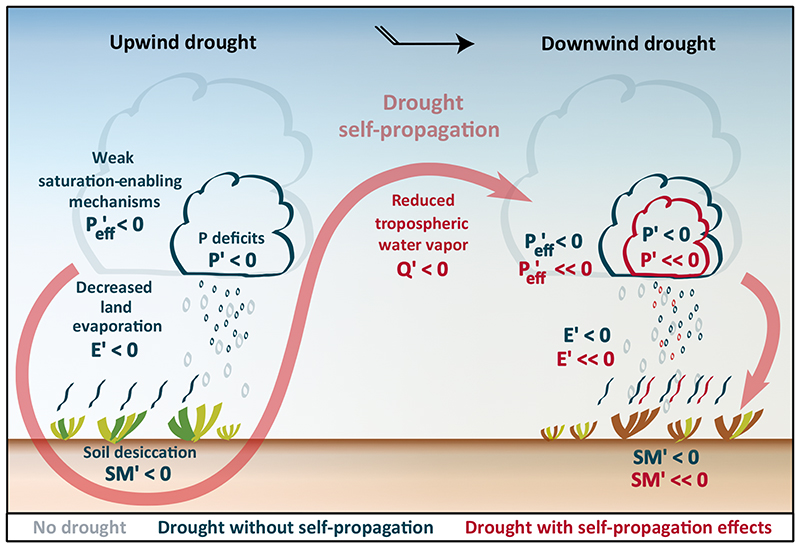Fig. 4. Upwind drought in drylands.
Meteorological drought is frequently triggered by weaker-than-usual dynamical saturation-enabling mechanisms (conceptualized as low precipitation efficiency; Peff’<0), which in turn may respond to a remote forcing, such as anomalous sea surface temperatures. Once that happens, limited precipitation (P’<0) causes soil desiccation (SM’<0) and soil stress, exacerbated by the high potential evaporation due to clear skies and elevated temperatures. Then, evaporation becomes (more) water-limited (E’<0). The reduction in near-surface air moistening — extending across the troposphere via vertical mixing — causes a reduction in water vapor being exported downwind (Q’<0). Therefore, further downwind, for the same precipitation efficiency, even less precipitation is expected (P’<0), contributing to downwind drought onset (SM’<0, E’<0). Moreover, since water vapor is known to enhance uplift, additional reductions are possible for convective precipitation (Peff’, P’, SM’, E’ << 0).

